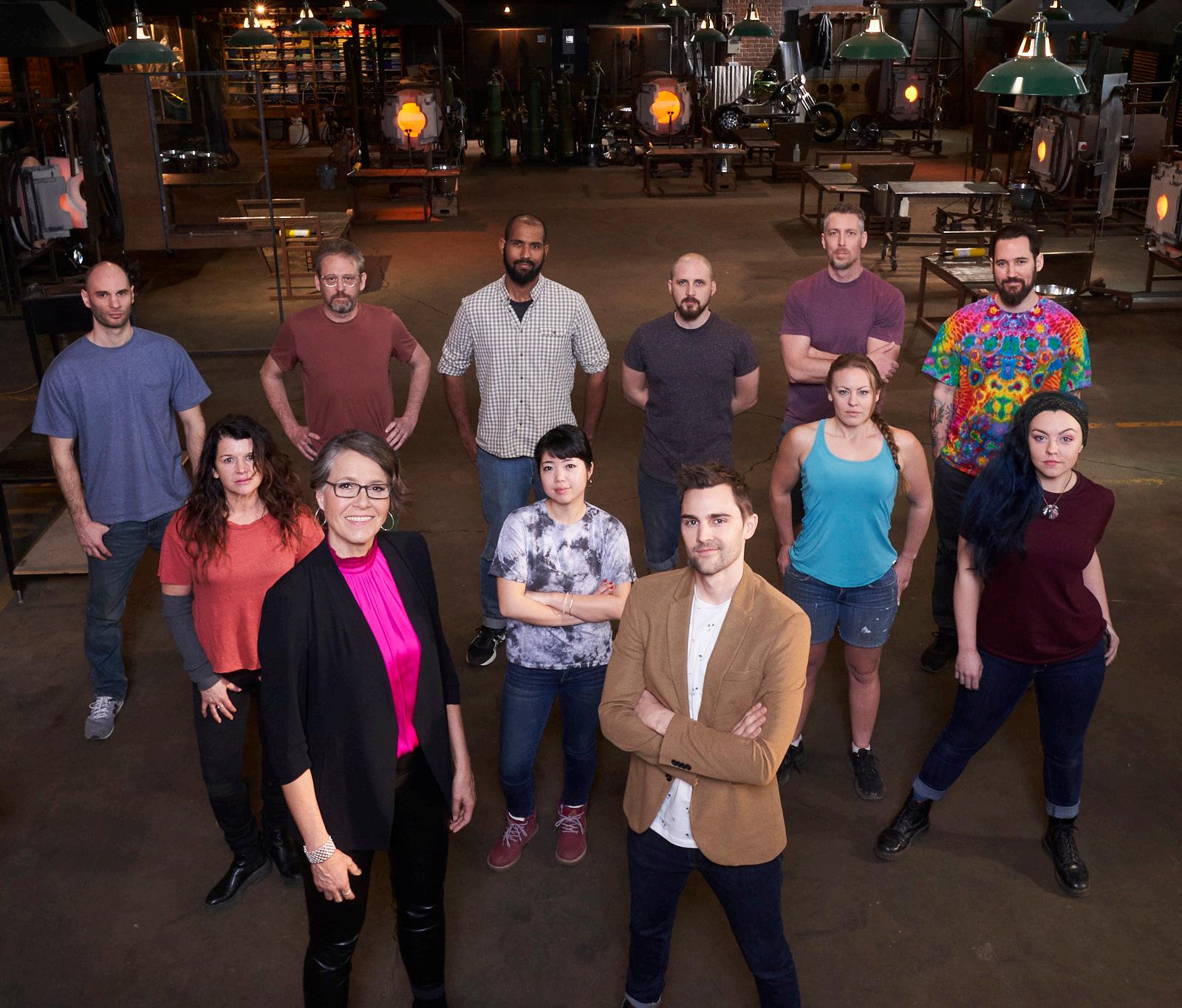
6 minute read
From 'Niche' to Netflix: How Blown Away has Changed the
FROM ‘NICHE’ TO NETFLIX: HOW BLOWN AWAY HAS CHANGED THE PERCEPTION OF GLASS
by Kim Thompson
“We’re making a glassblowing competition show for Netflix. We’ve been told we have to talk to Corning, so please call us back.” We’d gotten voicemails like this in the past—but this one had an urgency that begged for an immediate response. A week later, a production team visited The Corning Museum of Glass (CMoG) and details were shared about the concept of Blown Away, the competition show that would expose the art of glassmaking to a global community— something that hadn’t been done since the PBS documentary Chihuly Over Venice. With the Netflix name attached to Blown Away, CMoG knew there was a lot of potential in this production, and we had to be part of it.
“Even in that initial meeting, Blown Away was described as a ‘love letter to glass,’” said Eric Meek, CMoG’s Sr. Manager of Hot Glass Programs. “That’s what really captivated our imaginations and made us feel comfortable aligning with Blown Away. We knew this was going to be a quality production created by people who appreciated the beauty and complexity of the material. They wanted the world to understand and appreciate it, too. At CMoG, our mission is to inspire people to see glass in a new light, and we knew that’s exactly what this show could do.”
The CMoG team learned early on that renowned artist Katherine Gray had been confirmed as the “resident evaluator” for Blown Away—essentially what Tim Gunn was to Project Runway.
“I feel like this is going to be like a bomb going off in the glass world,” Katherine predicted, during filming of Season 1. “It’ll blow the doors off our whole little community and make it available for so many other people to experience and see.” Blown Away by Success
The first season of Blown Away launched in July 2019, quickly earning accolades in major print publications, and catching the contestants a bit off-guard.
“I’m still often surprised and overwhelmed at the scope and visibility of the experience,” said Alexander Rosenberg, who was a Season 1 finalist. “I’ve been regularly recognized by fans in public, contacted and commissioned by A-list celebrities, and been interviewed for podcasts, books, and on daytime TV. I’ve been able to make a stable living for the first time in memorable history.”
And Season 2 contestants seem to be on a similar trajectory.
“I’ve been completely overwhelmed by the positive responses to me and my work since the show launched. We’ve had some great interactions with new clients and well-wishers,” said Elliot Walker, who won the second season. “This sort of global exposure is such a pivotal moment in an artist’s career that people often overlook the journey and struggle all artists have to advance their careers in the first place. Everyone picked for the show deserved to be there without a doubt, and it was great to meet them all and learn for their varied experiences.”
But what is it about Blown Away—a seemingly niche show—that has spurred this kind of mainstream success for its participants? Co-CEO/Partner and Executive Producer at marblemedia, Matt Hornburg, describes the elements that led to the lightning-in-a-bottle success of his production company’s hit series.
“The ultimate essence of the show is about passion, and I think audiences love to watch people who are passionate about something where there’s high stakes for them in pursuit of trying to create something that moves us,” he said. “Passion is a universal theme that
audiences understand and can relate to, and I think we’re opening audiences to a really fascinating world. Blown Away is authentic—to the art form, the competitors, and the process—and I think audiences can feel that genuineness, and it’s likely refreshing in an atmosphere of content which ultimately feels overproduced.” The Ripple Effect
In the same way that watching a show like The Great British Bake Off might make you want to preheat the oven, the relatability of Blown Away has led to a fascination with this molten material. For Alexander, the he believes there’s a new interest in technical and design aspects, as well as the ideation process of glassmaking.
“[Blown Away has] created value around previously invisible aspects of the process,” he said. “People appreciate some relatively nuanced qualities of the type of glassworking I did on the series and have become willing to support artists working in less conventional ways with the material.”
And Katherine Gray has seen it, too. As a professor of art at California State University, San Bernardino, she had been seeing an increase in her beginner glass classes prior to the COVID-19 pandemic. After conducting an informal survey of glass instructors around the world, Gray noted that many others had seen a similar increase, especially in studios that offered “make-your-own” experiences.
“The pandemic stifled a lot of opportunities for people, students, neophytes, hobbyists, and anyone to blow glass, so I’m hoping as things are starting to return to normal, that deferred interest will reappear in spades,” Gray said. She described an interesting similarity between seemingly obscure professions in terms of cultural awareness: “I often think of a story I read in the New York Times about a scientist talking about the upside of the pandemic,” she continued, “and he joked that he didn’t need to explain what an epidemiologist is anymore. [Thanks to Blown Away] I also feel like I don’t have to explain what a glassblower is as much anymore!”
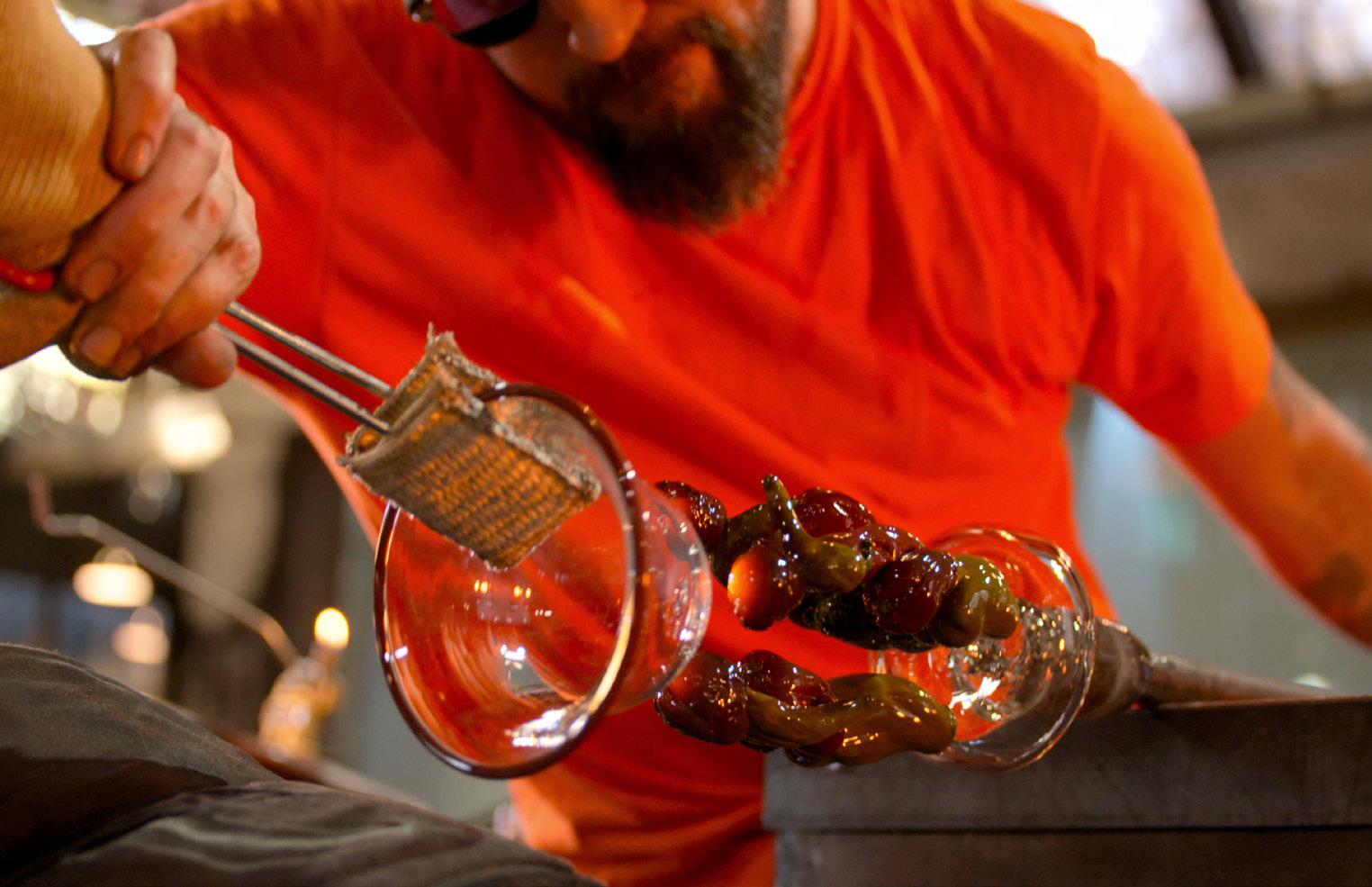
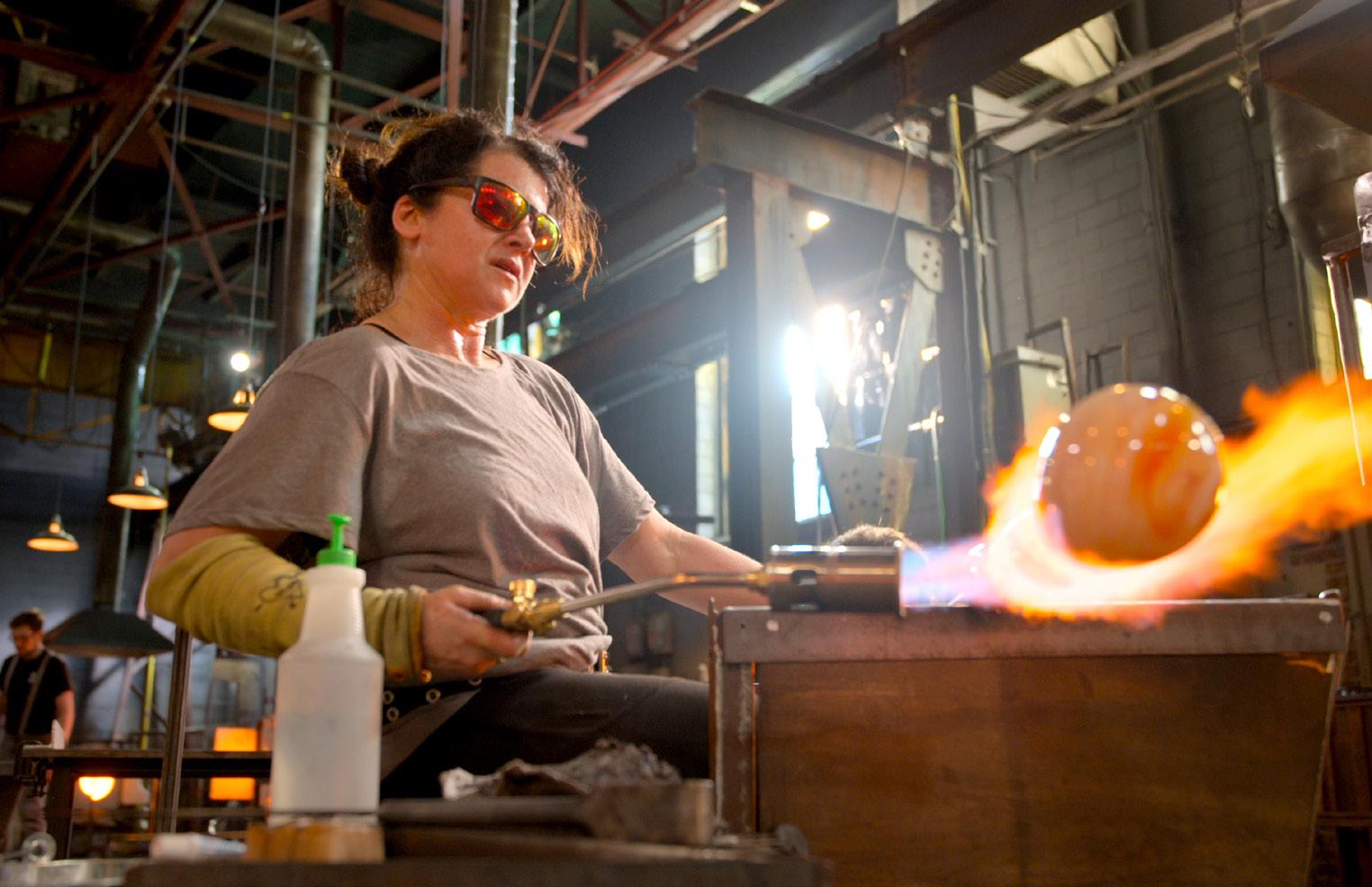
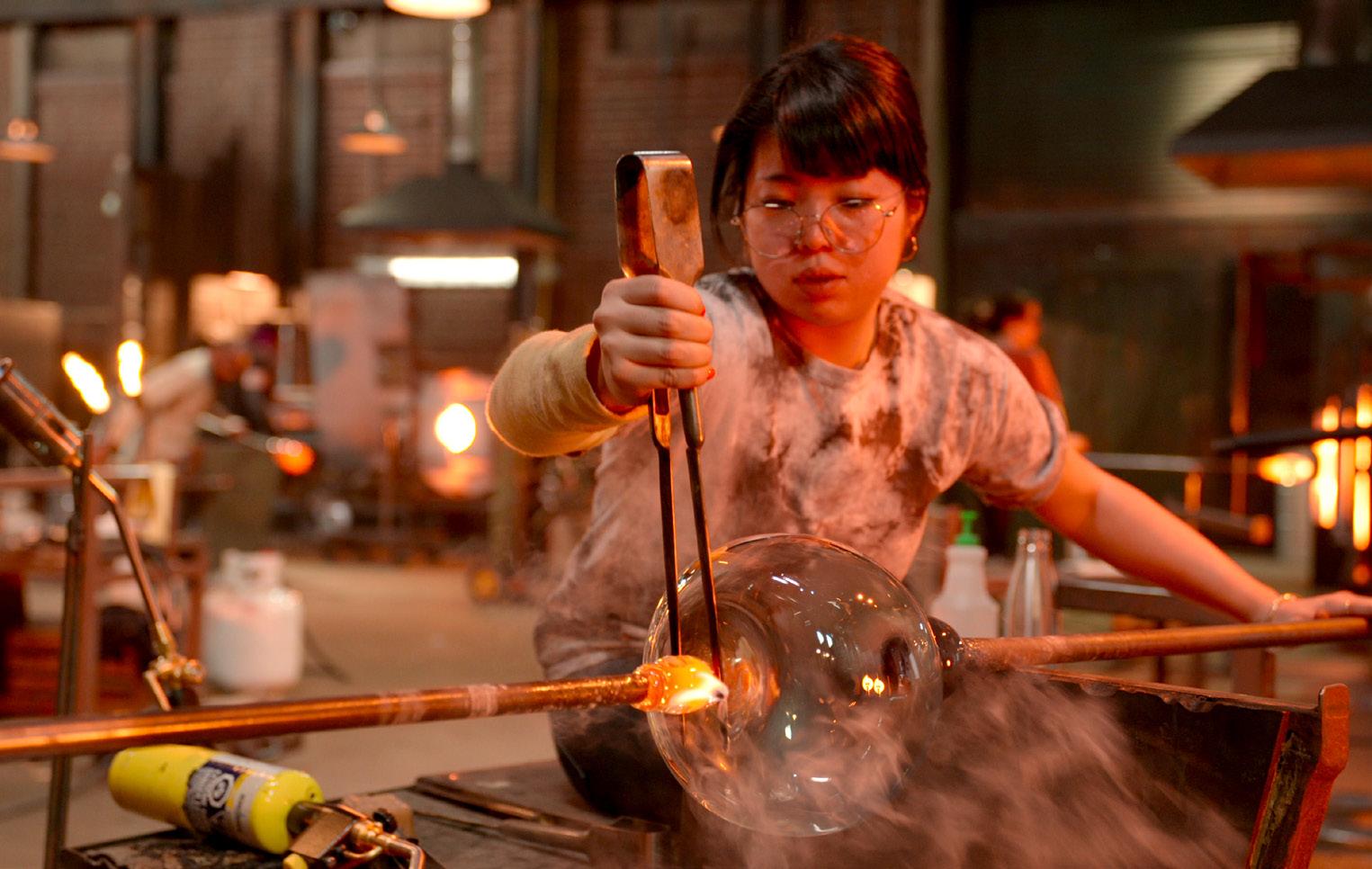
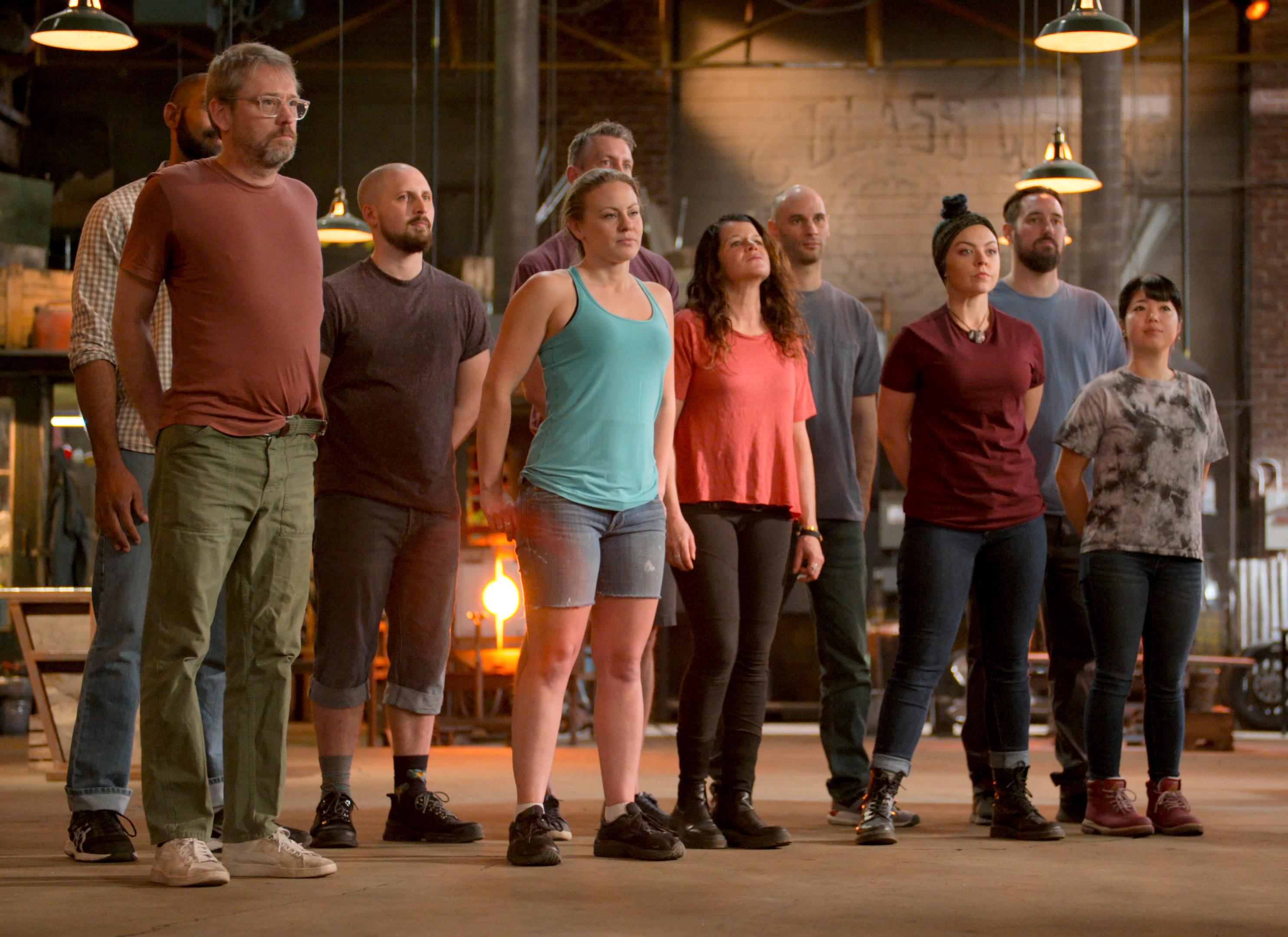
Images Courtesy of Netflix, Blown Away
Amplifying the Artistry of Glass
As Matt Hornburg noted, “entertainment is a very powerful megaphone.” Add to that a captivating creative process, compelling personalities, and global brand like Netflix, and you have a powerful recipe for success.
“I think it’s been so educational for the general public to get a sense of what goes into making something out of glass,” said Gray. “All the possible things that can go wrong, all the literal blood, sweat, and tears. Then for people to appreciate and support such artists is so gratifying.”
When asked how it feels to have been part of the first season of a production that caused this ripple effect within the glass community, Rosenberg says “it’s a bit mind-blowing to think of myself as someone who has impacted human perception of glassmaking as a discipline. I’m not sure how much weight to give to that role, but whatever truth there is to it, it’s humbling, and I’m grateful to have been part of it in the early stages.”
So, did Blown Away truly “blow the doors off” the glassmaking world? Although Gray speculates a little more time is needed before her early prediction is realized, she is enjoying the newfound enthusiasm in the field.
“Don’t get me wrong, I have a huge appreciation of all that Dale Chihuly has accomplished,” she says, “but it is refreshing to have some new household names in this field. And I truly love hearing how some of the contestants have become local heroes or are getting recognized on the street. I’m sure none of us ever went into this field thinking of that as the end goal, but it feels validating.”
As for The Corning Museum of Glass, whose mission is to “inspire people to see glass in a new light,” the benefits of Blown Away are seemingly endless.
“People are learning about glass before they set foot in our Museum,” said Meek. “The Corning Museum of Glass has been added to bucket lists because people have seen us on Netflix. And, in turn, we’re seeing more varied visitors who bring with them an established curiosity for the material, and a deeper desire to discover more. We knew from the beginning there was a lot of power and potential in Blown Away, and it certainly hasn’t disappointed.”
Kim Thompson is the Manager of Public Relations & Special Media Projects at The Corning Museum of Glass.










